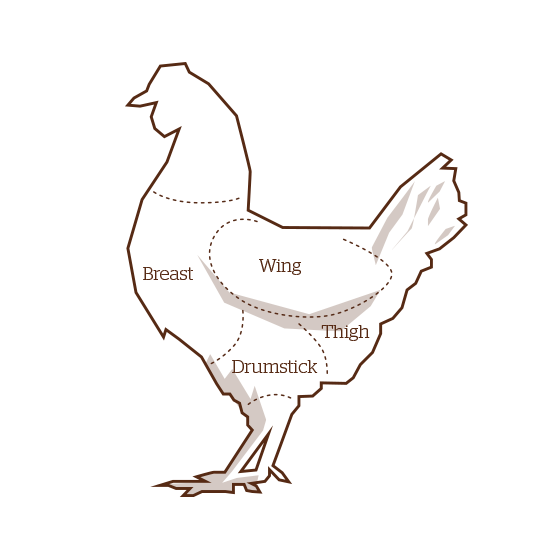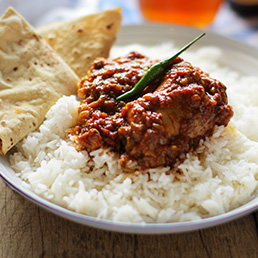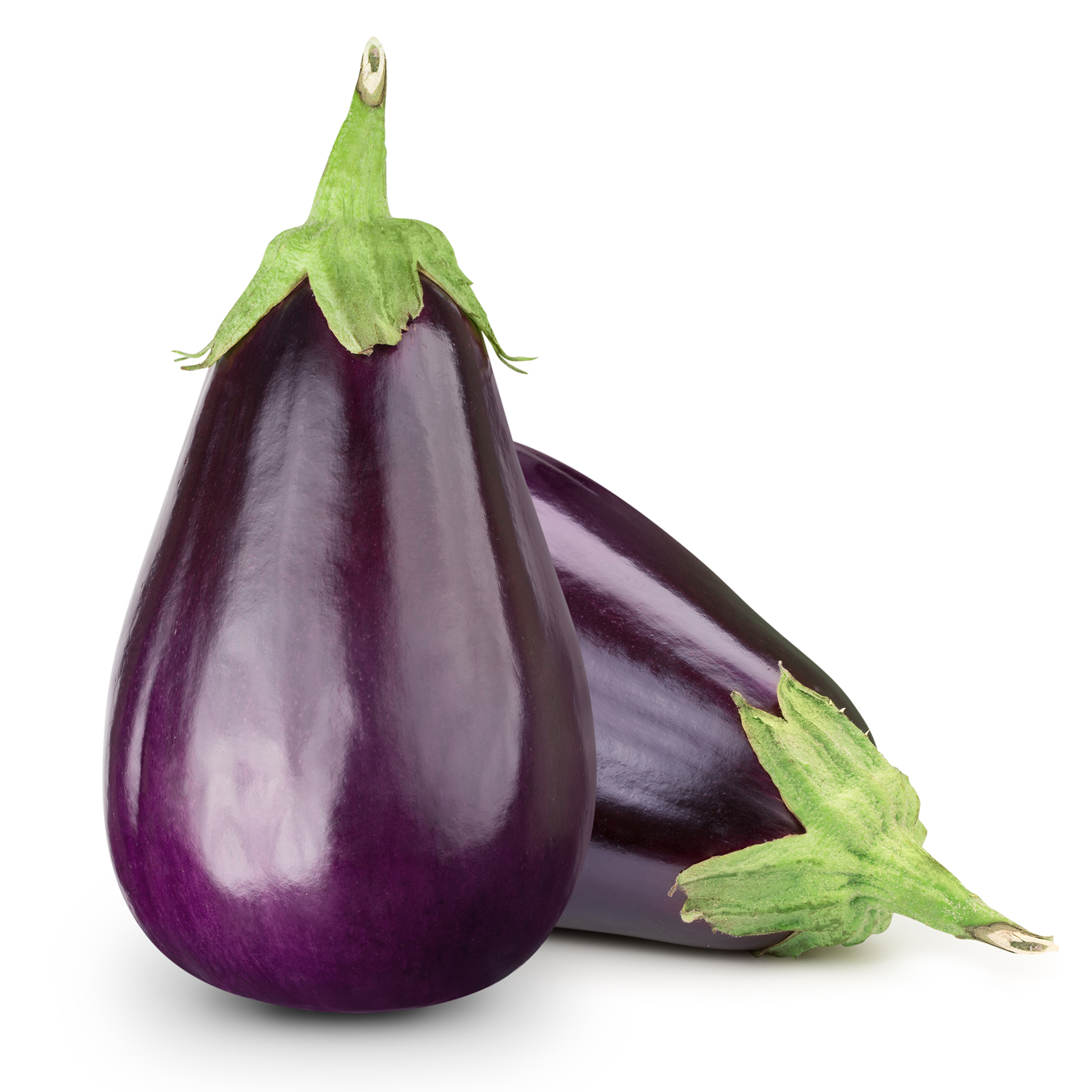Using Chicken in Indian Cooking
Chicken is used across India. From the North to the South there’s a kaleidoscope of dishes and styles of cooking that can be applied to the humble domesticated bird. So versatile is the chicken that the different cuts can be used in dishes with dark, deep, rich gravies such as Thari Wala Chicken or Murg Makhani, two very different sauces - right through to flavourful marinades such as the world famous Tandoori Chicken from the North of India. Those quick and easy snacks that can be fried or roasted such as Chicken Tikka or Chicken Kebabs when served with vibrant hot and tangy chutneys are out of this world. In the South of India slow cooked decadent dishes are heaped with flavour and whole spices, such as the Chicken Briyani.
Chicken cuts
Breast
In western cuisine this is the most popular part of the chicken. Bought as a whole breast, with the skin on or off, or sliced up into smaller chunks. This white meat can be marinated, pan-fried, stuffed, baked, tandooried, roasted or barbecued. If you want to cook chicken in a curry or in a sauce use smaller pieces, but just ensure they are not overcooked as they can dry out very quickly. My recommendation would always be to use thigh fillets.
Wings
I love wings – the cheapest part of the chicken which comes on the bone or as a nibble or mid wing (with the winged end removed). Great marinaded, pan fried, cooked in a karahi low and slow, roasted, grilled or barbecued - what ever you do make sure the skin is crisp and the meat is succulent and delicious.
Legs
With chicken the legs work harder than any other part of the animal, so the meat is naturally firmer and slightly more fatty. It requires different treatment than the breast and tends to stay more moist and tender, but needs to be cooked for longer than breast meat. The legs can be split into the drumsticks and thigh, depending on what you are cooking, but I also tend to leave them whole when roasting or cooking in the tandoor oven.
Drumsticks
The drumstick or chicken shins are cooked on the bone and are a cheap cut. This as well as the thigh is the dark meat which requires slightly more cooking but is much more flavoursome. They can be used in a number of ways from crisp and dry on the BBQ to tender and juicy in a sauce. In a sauce cook gently until the meat melts off the bone.
Thighs
For me the chicken thigh is my secret ingredient in my chicken dishes, so much so that I never use breast meat. The thigh can be either de-boned and used as a fillet or cooked on the bone. It is a cheaper cut but in my mind the best and most tasty part of the chicken because it is intrinsically more fatty so it doesn't dry out when you add it to an Indian sauce.
Giblets
Include heart, neck and liver. Neck and heart are great for stocks, but also for some amazing dishes in there own right. Liver you can fry off with some great spices as a little snack or starter, but also in pates and stuffing.
Handling and Cooking Chicken
Food poisoning comes as a result of eating food that has been contaiminated with pathogenic bacteria such as Campylobacter, Salmonella, E.coli 0157 or Listeria. Most chicken will have trace levels of Campylobacter or Salmonella on them so it is really important that you handle the meat correctly to avoid cross contamination. This pathogenic bacteria can be present in your raw meat even if it's fresh.
In most cases food borne illnesses are not serious and the patient recovers after a few days but in some cases they can become extremely dangerious.
Raw chicken has this bacteria present due to the slaughter and processing of the meat but if treated correctly in your home you should be able to avoid any sympotoms of food poisioning. My 4 C's might help you to remember how to treat raw chicken to avoid getting sick.
1. Cooling - Always store raw chicken in the fridge below 5°C. This slows down or stops the growth the sickness causing bacteria that are present on the meat. You can also freeze the meat to -18°C which pauses any growth of bacteria.
2. Cleaning - Always wash your hands before and after handling raw meat. Keep your work areas organised and clean. Wash knives, chopping boards, surfaces inbetween working with chicken and other ingredinets.
3. Cross contanimination - Avoid cross contamintion by thinking about what you are doing in the kitchen.
Never:
Wash your chicken - the water droplets will spread the bacteria around your work surfaces.
Let raw meat come into contact with ready to eat food such as salads, vegetables etc.
Defrost your chicken at room temperature - defrost inthe fridge, on the bottom shelf in a sealed container (away from ready to eat food).
Always:
Prep your vegetables first, then your meat
Try to use different chopping boards
Wash your hands inbetween touching raw meat and other ingredients
Handle the meat as little as possible.
Check the Use by dates.
4. Cooking - When chicken cookes it changes colour and texture. Cooking your chicken correctly will render any pathogenic baceria harmless so ensure it's cooked and steaming hot all the way through. The meat should not be pink and the juices should be clear. Invest in a temperature probe and ensure the internal temperature of your chicken in the thickest part is 65°C.
Back to Cooking guides




Comments